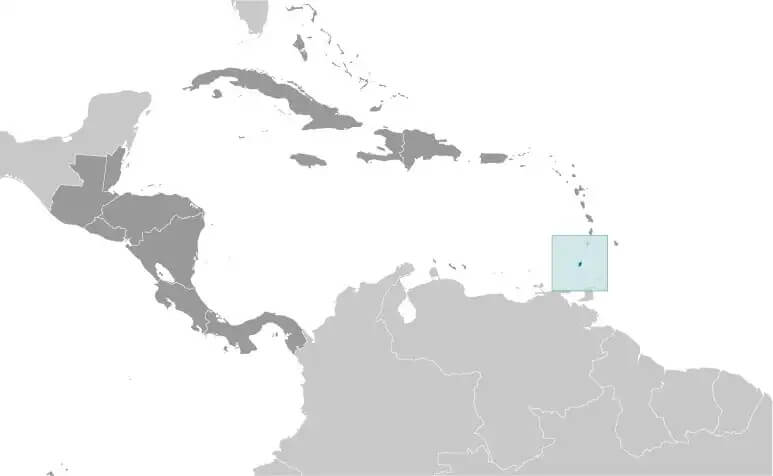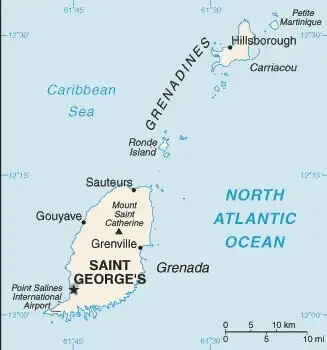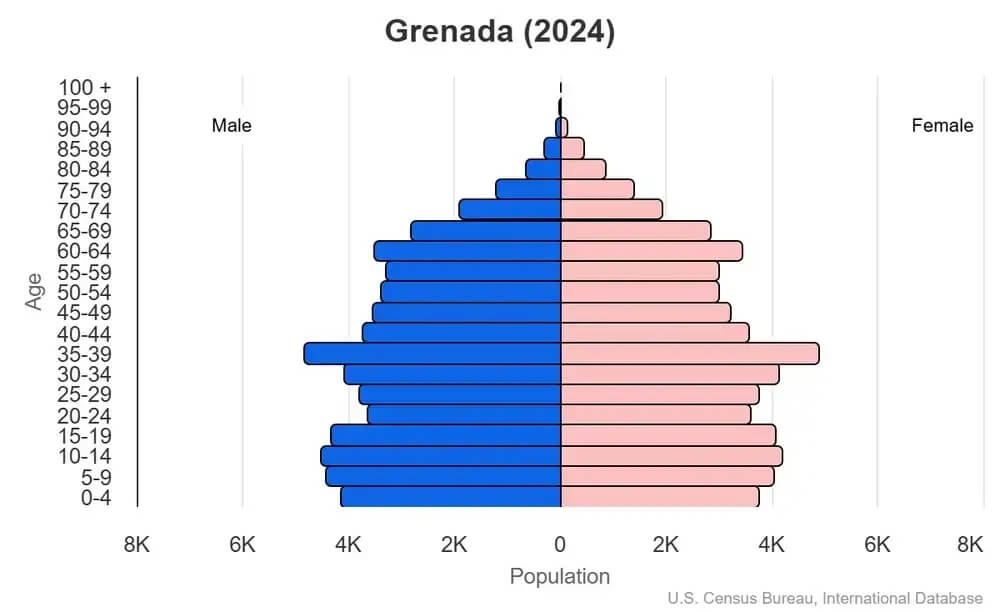World Book
Grenada
Introduction
Background
The indigenous Carib people inhabited Grenada when Christopher COLUMBUS landed on the island in 1498, but it remained uncolonized for more than a century. The French settled Grenada in the 17th century, and Britain took the island in 1762, establishing sugar, cacao, and then nutmeg plantations. Independence in 1974 made Grenada one of the smallest independent countries in the Western Hemisphere.
Geography
Area
total : 344 sq km
land: 344 sq km
water: 0 sq km
Climate
tropical; tempered by northeast trade winds
Natural resources
timber, tropical fruit
People and Society
Population
total: 114,621 (2024 est.)
Ethnic groups
African descent 82.4%, mixed 13.3%, East Indian 2.2%, other 1.3%, unspecified 0.9% (2011 est.)
Languages
English (official), French patois
Religions
Protestant 49.2% (includes Pentecostal 17.2%, Seventh Day Adventist 13.2%, Anglican 8.5%, Baptist 3.2%, Church of God 2.4%, Evangelical 1.9%, Methodist 1.6%, other 1.2%), Roman Catholic 36%, Jehovah's Witness 1.2%, Rastafarian 1.2%, other 5.5%, none 5.7%, unspecified 1.3% (2011 est.)
Population growth rate
0.27% (2024 est.)
Government
Government type
parliamentary democracy under a constitutional monarchy; a Commonwealth realm
Capital
name: Saint George's
Executive branch
chief of state: King CHARLES III (since 8 September 2022); represented by Governor General Cecile LA GRENADE (since 7 May 2013)
head of government: Prime Minister Dickon MITCHELL (since 24 June 2022)
Diplomatic representation in the US
chief of mission: Ambassador Tarlie FRANCIS (since 15 September 2023)
Diplomatic representation from the US
chief of mission: the US does not have an official embassy in Grenada; the Chargé d’Affaires to Barbados, Karin B. SULLIVAN, is accredited to Grenada
Economy
Economic overview
small OECS service-based economy; large tourism, construction, transportation, and education sectors; major spice exporter; shrinking but still high public debt; vulnerable to hurricanes; emerging blue economy incentives
Real GDP (purchasing power parity)
$2.08 billion (2024 est.)
$2.005 billion (2023 est.)
$1.916 billion (2022 est.)
Real GDP per capita
$17,700 (2024 est.)
$17,100 (2023 est.)
$16,400 (2022 est.)
Exports
$858.949 million (2024 est.)
$828.529 million (2023 est.)
$706.195 million (2022 est.)
Exports - partners
USA 24%, Antigua & Barbuda 13%, St. Vincent & the Grenadines 8%, Dominica 6%, Trinidad & Tobago 5% (2023)
Exports - commodities
nutmeg/cardamons, fish, wheat flours, frozen fruits and nuts, aqueous paints (2023)
Imports
$990.587 million (2024 est.)
$924.688 million (2023 est.)
$785.022 million (2022 est.)
Imports - partners
USA 37%, Trinidad & Tobago 13%, Cayman Islands 10%, China 4%, UK 3% (2023)
Imports - commodities
refined petroleum, cars, poultry, ships, plastic products (2023)
Human Development Index
The country's Human Development Index (HDI) is 0.791, ranking it 80th out of 193 countries tested. (more information)



